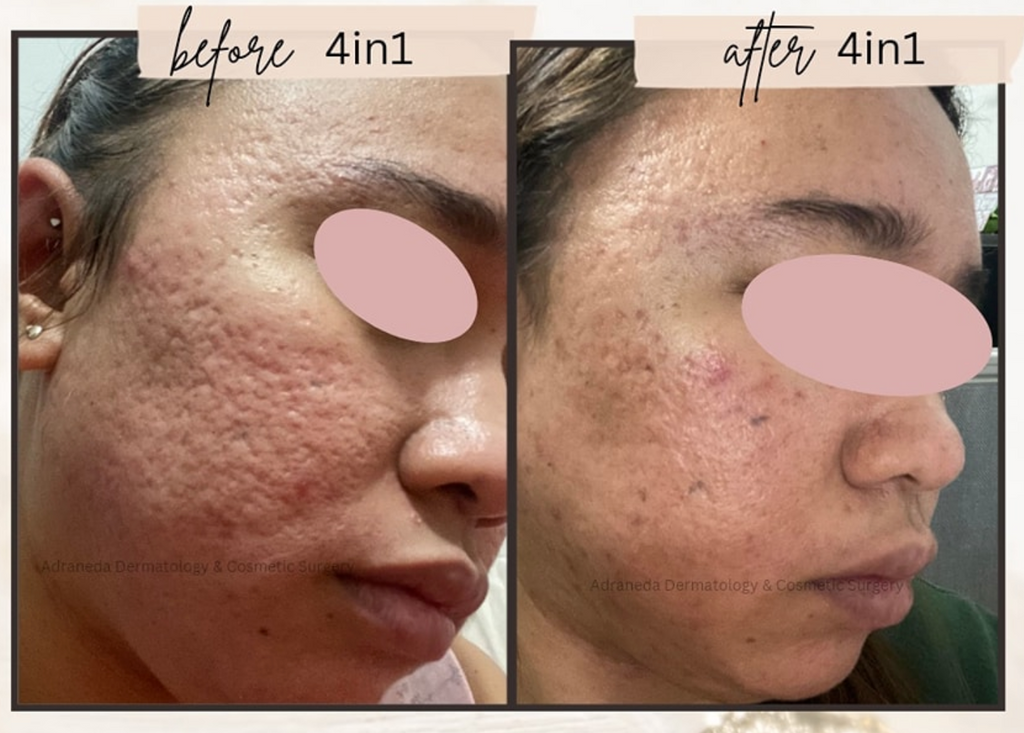Acne and Acne Scars Treatment: Professional Solutions for Lasting Results
Acne and Acne Scars Treatment: Professional Solutions for Lasting Results
Blog Article
Exploring Skin Disease: Treating and recognizing Acne Scars for Healthier Skin
Acne scars stand for a considerable worry for individuals looking for to maintain healthy skin, as they can impact both look and self-esteem. Understanding the various kinds of marks, from atrophic to hypertrophic, is vital for figuring out ideal treatment alternatives.
Comprehending Acne Marks

The body's all-natural healing process can result in either atrophic scars, which look like anxieties in the skin, or hypertrophic marks, which are increased and result from overproduction of collagen. In addition, the psychological toll of acne marks should not be underestimated; many individuals report feelings of embarrassment, anxiety, and reduced self-esteem. This psychological burden can affect social interactions and general quality of life.
Resolving acne marks needs an extensive understanding of their development and impact. Understanding of the possibility for long-term effects associated with unattended scars can inspire people to seek proper treatments. Early intervention and effective monitoring methods can substantially boost skin appearance and improve psychological resilience, highlighting the importance of recognizing the intricacies bordering acne marks.
Types of Acne Marks
Acne marks can be categorized into distinctive types, each showing distinct characteristics and needing certain treatment strategies. skin rejuvenation treatments. The primary sorts of acne scars consist of atrophic, hypertrophic, and keloid scars

Hypertrophic marks, in contrast, are increased above the skin level and are the outcome of extreme collagen manufacturing throughout the recovery process. They typically remain within the boundaries of the original acne sore. Keloid scars are similar but prolong past the original injury site, forming bigger, raised areas that can be itchy or painful.
Comprehending these sorts of marks is important for choosing appropriate treatment options. Various marks might react better to particular therapies, such as laser therapies, fillers, or surgical treatments, emphasizing the relevance of a tailored approach to acne mark management.
Recognizing Your Scars
Acne marks typically drop into 2 categories: hypertrophic and atrophic scars. These can better be classified right into ice-pick marks, boxcar scars, and rolling scars, each showing distinct attributes and requiring different techniques for evaluation.
Hypertrophic marks, on the various other hand, are raised and occur as a result of extreme collagen production throughout the recovery process. Acknowledging the details features of your marks-- such as size, structure, and depth-- is essential for appropriate recognition (acne scars). Additionally, consider the circulation of marks across your skin, as this can suggest the seriousness and period of the acne problem
Involving with a skin doctor can offer important understandings into the nature of your marks, assisting in the distinction in between numerous types. A thorough understanding of your marks will inevitably lead to an extra tailored and effective treatment strategy, guaranteeing a clearer and much healthier skin tone.
Treatment Alternatives Available
Determining the specific kind of acne scars existing on your skin prepares for discovering effective treatment options. Usual types of acne scars consist of atrophic (clinically depressed), hypertrophic (elevated), and post-inflammatory erythema.
For atrophic scars, options such as chemical peels, microneedling, and laser resurfacing are commonly made use of. Chemical peels utilize acids to get rid of the outer layer of skin, promoting brand-new cell growth. Microneedling entails small needles that produce micro-injuries, stimulating collagen production. Laser resurfacing targets damaged skin cells, improving texture and tone. visit site
Hypertrophic scars can be treated with corticosteroid injections to flatten the scar or laser treatment to minimize inflammation and enhance appearance. Silicone gel sheets and stress dressings may also aid in taking care of raised scars.
Furthermore, facial fillers can temporarily load in clinical depressions from atrophic scars, while surgical excision may be suitable for serious situations. Each therapy option has its benefits and considerations, making it vital to speak with a skin doctor. They can provide personalized recommendations based upon the type and severity of your marks, as well as your skin kind and total wellness.
Tips for Avoidance
Efficient avoidance strategies can dramatically reduce the likelihood of establishing acne scars. Utilizing non-comedogenic items assists prevent clogged up pores, which can exacerbate acne.
Preventing the impulse to pop or pick acne sores is crucial, as this can lead to deeper skin damages and enhance the threat of scarring. Rather, think about making use of a chilly compress or non-prescription treatments to minimize swelling and soreness.
Sun protection is one more crucial facet of prevention; ultraviolet (UV) rays can dim marks and prevent the recovery process. Applying a broad-spectrum sun block with at the very least SPF special info 30 daily can secure the skin and advertise also healing.
Finally, keeping a balanced diet regimen rich in minerals, vitamins, and antioxidants sustains skin wellness and healing. Remaining moisturized and taking care of stress degrees can also play a significant role in decreasing acne flare-ups. By executing these methods, individuals can substantially decrease their chances of creating acne scars.
Verdict
In conclusion, understanding and recognizing acne scars is vital for efficient therapy and achieving much healthier skin. Various kinds of acne marks, including hypertrophic and atrophic scars, demand certain treatments tailored to individual needs.
The body's all-natural healing process can result in either atrophic scars, which appear as clinical depressions in the skin, or hypertrophic marks, which are elevated and result from overflow of collagen. They are additional separated right into 3 subtypes: my explanation ice choice scars, boxcar scars, and rolling scars. Acne marks normally drop right into two groups: hypertrophic and atrophic marks. These can better be classified into ice-pick scars, boxcar scars, and rolling scars, each exhibiting unique qualities and requiring various methods for assessment.
Various types of acne scars, consisting of atrophic and hypertrophic marks, require specific interventions tailored to private needs.
Report this page